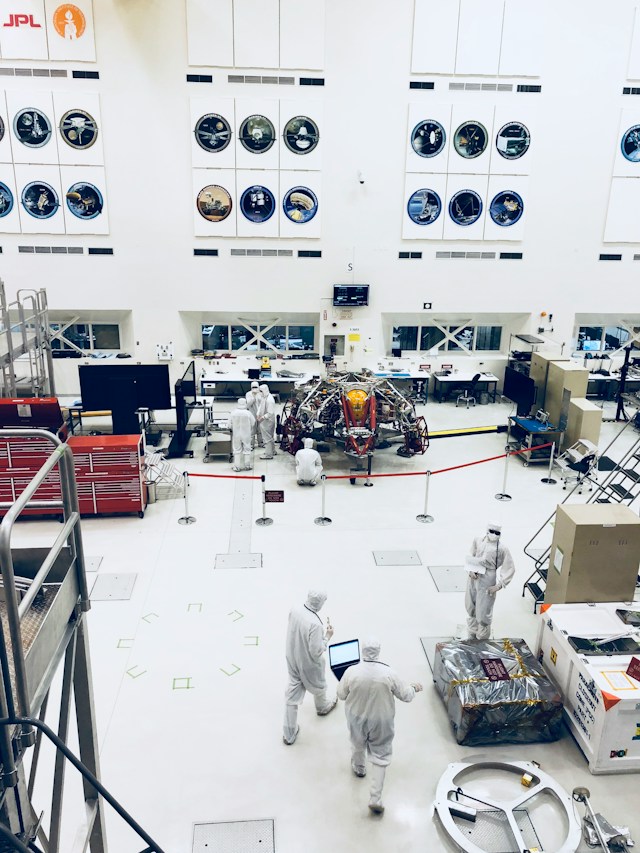
Introduction
Facilities management services have entered a new era, propelled by the transformative power of technology. From artificial intelligence to the Internet of Things (IoT), the future of facilities management services is increasingly defined by tech-driven efficiency. This article explores the innovative ways in which technology is shaping the landscape of facilities management, unlocking unprecedented levels of efficiency and effectiveness.
1. The Tech Revolution in Facilities Management: A Paradigm Shift
The traditional landscape of facilities management is undergoing a seismic shift, marked by the integration of cutting-edge technologies. This tech revolution is fundamentally altering how facilities are managed, creating a more dynamic and responsive environment. From predictive maintenance to smart energy management, technology is the driving force behind this paradigm shift.
2. IoT and Real-Time Monitoring: Enhancing Operational Visibility
One of the key advancements in tech-driven facilities management is the widespread adoption of the Internet of Things. IoT sensors are embedded in various systems, providing real-time data on equipment performance, energy usage, and space utilization. This level of operational visibility empowers facilities managers to make informed decisions, optimize resources, and address issues before they escalate.
3. Predictive Maintenance: Minimizing Downtime through Data Analytics
Tech-driven facilities management leverages data analytics and machine learning algorithms to enable predictive maintenance. By analyzing historical data and performance metrics, systems can anticipate when equipment is likely to fail and schedule maintenance before issues arise. This not only minimizes downtime but also extends the lifespan of assets.
4. Smart Building Automation: Streamlining Operations
Smart building automation is revolutionizing how facilities are managed. From HVAC systems to lighting and security, automation technologies allow for centralized control and optimization. This not only enhances energy efficiency but also streamlines day-to-day operations, creating a more responsive and adaptable built environment.
5. Augmented Reality (AR) for Maintenance and Training: A New Dimension
The integration of augmented reality (AR) is transforming maintenance and training processes in facilities management. Technicians equipped with AR devices can access real-time information, schematics, and instructions overlaid on their field of vision. This not only accelerates problem-solving during maintenance but also enhances the efficiency of training programs.
6. Energy Management Systems: Optimizing Resource Consumption
Efficient resource management is a cornerstone of tech-driven facilities management. Energy management systems use real-time data and analytics to optimize energy consumption, identify areas for improvement, and implement strategies to reduce environmental impact. This not only lowers operational costs but also aligns facilities with sustainable practices.
7. Robotics and Automation: Redefining Workforce Dynamics
The introduction of robotics and automation into facilities management is reshaping workforce dynamics. Robots equipped with sensors can perform routine tasks, such as cleaning and maintenance, freeing up human resources for more complex and strategic responsibilities. This integration enhances efficiency while ensuring a more strategic allocation of human talent.
8. Cloud-Based Facilities Management Software: Enhanced Connectivity
Cloud-based facilities management software is revolutionizing how data is stored, accessed, and shared. This technology allows for seamless collaboration and connectivity among various stakeholders. From facility managers to maintenance teams, everyone can access real-time data, streamline communication, and contribute to a more agile and responsive operational environment.
9. Integrated Security Systems: Ensuring Safety and Compliance
Tech-driven facilities management extends to security, with integrated systems that incorporate access control, surveillance, and alarm systems. These technologies enhance the safety of occupants, protect assets, and ensure compliance with security protocols. The integration of AI further enables predictive security measures, proactively identifying and addressing potential threats.
10. Data Security and Privacy Measures: Safeguarding Information Assets
As technology becomes more integral to facilities management, the importance of data security and privacy measures cannot be overstated. Tech-driven facilities management incorporates robust cybersecurity protocols, encryption techniques, and regular audits to safeguard sensitive information. This ensures that the benefits of technology are harnessed without compromising data integrity.
Conclusion
In conclusion, the future of facilities management is undeniably intertwined with technological innovation. From IoT and predictive maintenance to robotics and cloud-based software, technology is propelling the industry towards unprecedented levels of efficiency, sustainability, and connectivity. Embracing these tech-driven strategies is not just a choice but a necessity for organizations seeking to navigate the complexities of modern facilities management and unleash the full potential of their operational environments. As we stand at the intersection of technology and facility management, the possibilities for creating smarter, more efficient, and responsive workplaces are truly limitless.



